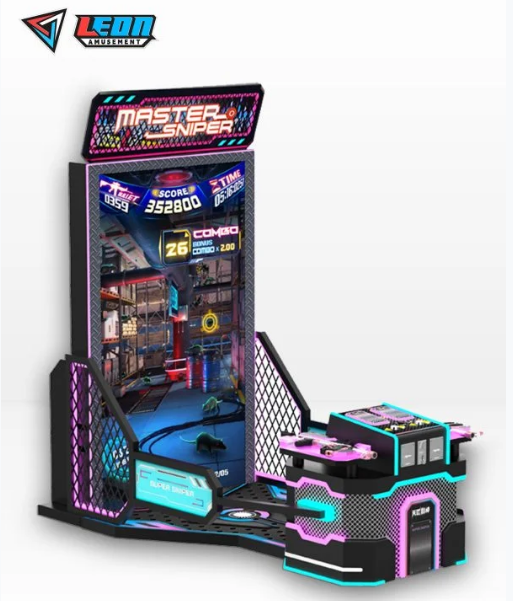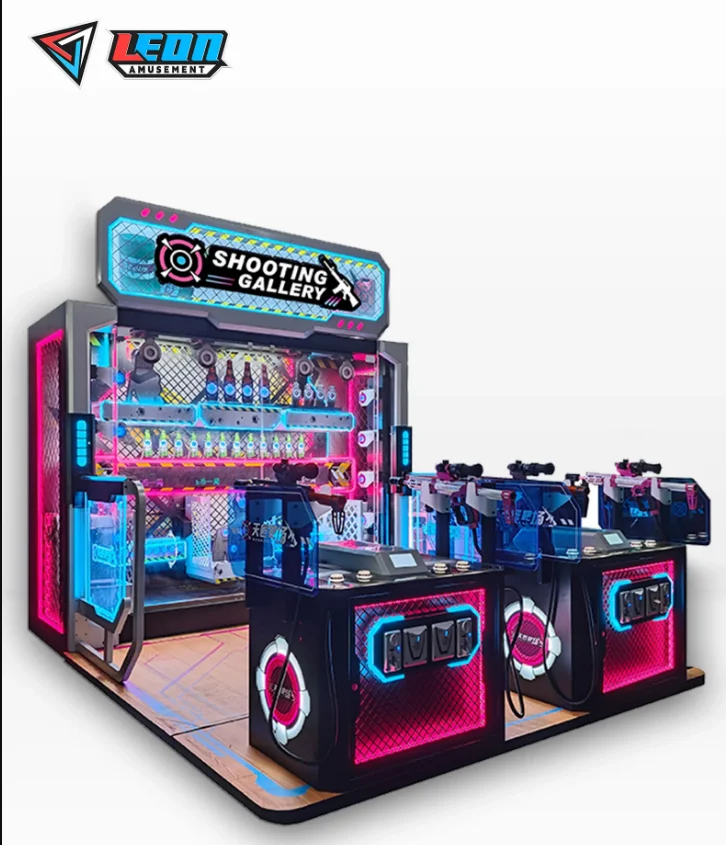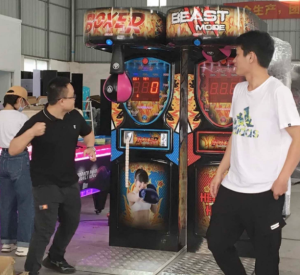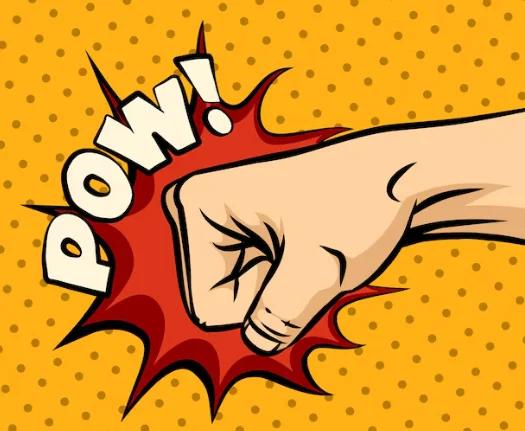The average price of an arcade game machine varies widely: classic machines often range from $1,000 to $3,000, modern machines can reach $3,000 to $10,000, and specialty machines like pinball range from $5,000 to $10,000. Used options often lower costs significantly, sometimes as low as $500.
Table of Contents
ToggleClassic Arcade Machines
This arcade classic has a strong nostalgic feel, bringing retro gaming into modern spaces, and it comes in a wide range of prices that reflect factors such as rarity, condition, and specific title. For instance, popular titles such as Pac-Man, Donkey Kong, or Space Invaders are available at a modest price range; the cost for well-preserved models usually ranges between $1,200 and $2,500. However, rarer games like Dragon’s Lair, full-motion video, and special animation styles fetch the price of $3,500 or more since its production is small and has high demand from collectors. Machines that have been restored by fine specialists sell at much higher amounts often at $2,800 and more depending on their execution, but if it has original parts and works entirely correctly, then it sells for more than $5,000.
The first most important factor that can help in determining the value of a classic arcade machine is its condition. For instance, if it contains perfectly functional CRT displays, all original buttons and joysticks, and artwork, the cost will be higher. A complete restoration with an excellent preserved CRT for a Galaga cabinet would fall in the range of $2,200 to $3,000. The same Galaga cabinet non-restored will sell for a price between $1,000 to $1,500. Many customers seek to economize on expense by selecting cabinets that will require only minor repairs, such as replacing buttons or making monitor adjustments. Replacing one of the original CRT screens would cost between $200 and $500, but there is an option for owner-installed LED conversion kits that cost around $300 if the owner desires a modern, low-maintenance display. Poor conditions of machines can be bought at just $800 but usually need more expense to get them in playing condition.
There are also various types of arcade classic styles with distinct dimensions and prices. The most common is the upright arcade cabinet, and it stands approximately 5 to 6 feet high, with a weight of around 300 pounds. These are floor-standing cabinets, require a dedicated space, and most popular titles range in the area of $1,500 to $2,500. On the other hand, “cocktail” or “tabletop” versions are about 29 to 33 inches tall and designed to be played while sitting. They often make for very popular choices for home gaming rooms, costing in the range of about $1,800 to $2,200, pending the title and condition. Cocktail cabinets are lighter, weighing between 100 and 150 pounds, whereas some upright cabinets weigh as much as 200 pounds.

Modern Arcade Machines
Modern arcade machines are upgraded technologies featuring enhanced gameplay for a broad selection of gaming preferences. For greatly varied price points, simple modern arcade machines such as Golden Tee Golf or Big Buck Hunter would run around $3,000 and $5,000, depending on options like custom controls or updated software. For example, new software versions and connecting options for online multiplay games raise the prices of the games. A typical full-featured Golden Tee complete with online leaderboards and a high-definition screen will cost around $5,000 while the offline versions start at 3,200 dollars.
Multiplayer arcade games with sizes of a 4-player system, graphics, and added player functionality to take home are very expensive. Such games like Mario Kart Arcade GP DX often run between two to four linked units and up to four players when their cabinets are linked together. For the full four-player experience—which includes additional controls and screens—the price rises to $15,000 and above. Games with dynamic or motion-based gameplay, like House of the Dead or Jurassic Park Arcade, sell for anywhere from $10,000 to $20,000—usually at the selling price, depending on both the intense experience and the motion-activated seats. The motion seats themselves even usually cost a few thousand dollars more than the total price it would be, had one just ordered the type of hardware the experience requires.
High-end racing simulators probably offer the best modern arcade options, serving up both visual and physically active immersion through detailed simulations. Machines such as Sega’s OutRun 2 SP Deluxe or Daytona Championship USA will set you back somewhere in the realm of $15,000 to $25,000. The more advanced simulators include multi-monitor setups, ultra-realistic sound systems, and the like and have prices starting over $30,000. Again, the price differences are based on the machine’s quality, screen size, and added features such as adjustable seating, varying difficulties, and customizable gameplay options which add to the driving experience.

Pinball Machines
The prices of the machines strongly differ based on age, condition, features, and a lot of other factors. Newer entry-level pinball machines can start as low as $5,000 for base models from companies such as Stern Pinball. While simpler in design, these machines provide the core pinball experience: flippers, bumpers, and classic sound effects. For instance, the very basic Stern Star Wars Pro pinball machine, which merely provides a basic level of gameplay, starts at $5,200. Add in more features—interactive elements, detailed artwork, specialized lighting—and the price can easily leap to $7,500 for the Premium version of that same game and $9,000 for the Limited Edition.
This is true of modern games; vintage pinball machines, however, are highly in demand by collectors and enthusiasts, especially those from the 1970s and 1980s. These machines sometimes have their own mechanics and more nostalgic themes not as frequently replicated in today’s designs. Their cost ranges from $2,000 for less than rare models to upwards of $10,000 or more for collectible or restored machines, based on model and condition. For instance, an iconic title of the 1990s like Medieval Madness has recently fetched in good order around $8,000 to $10,000, while fully restored variants sell for upwards of $12,000. Meanwhile, more classic, run-of-the-mill machines—those that might require repair or have sustained cosmetic damage—can change hands anywhere from $1,500 to $3,000, but again, this is often just a starting point with money in the bank for maintenance and spares.
New pinball machines these days have evolved to include LCD displays, complex light shows, and even digital interaction. Machines from companies like Jersey Jack Pinball, recognized by their high-tech designs and themes licensed from popular franchises, generally start upwards of at least $9,000. Games such as The Wizard of Oz and Pirates of the Caribbean boast multilevel playfields, custom soundtracks, and RGB LED lighting; thus, they’re pretty much immersive and range upwards of $9,000 to $12,000. More advanced models, with limited production runs, such as the Guns N’ Roses Collector’s Edition from Jersey Jack, would cost in the ballpark of $12,500 to $13,000, considering exclusive artwork, custom-designed playfields, and limited availability.

Multi-Game Machines
Multi-game machines have grown increasingly popular due to their versatility and handiness, hosting a number of very authentic arcade games within one cabinet. Depending on the number of games, the size of the screen, and the quality of the cabinet, the cost of multi-game machines can range from $1,500 up to $4,000. For example, an entry-level multi-game machine with about 60 games, Ms. Pac-Man and Galaga, would be about $1,500 to $2,000. Most of these entry-level machines come in the regular upright cabinet design and single stick with simple button configurations of retro gaming.
High-end multi-game machines run between $3,000 and $4,000 with up to 1,000 games or more. These models usually boast large HD monitors, numerous control setups, and better audio for full immersion. One of the hottest options in this line is the AtGames Legends Ultimate arcade cabinet, which, for about $3,000, features more than 300 preloaded games. It also includes internet connectivity that would allow people to download more games and access leaderboards, adding even more value for the serious gamer.
Customization factors are a big determinant of pricing for multi-game machines: most vendors offer customization options for cabinets, which come complete with personalized artwork, LED lighting, and high-end controls, adding an extra $500 to upwards of $1,500 on the base price. For example, a custom multi-game machine with improved graphics according to your preference, joysticks improved, and a 32-inch wide screen would cost you approximately $4,500. In fact, this is mainly in demand among people who are quite serious about arcades and want something improved that fits their home decoration or gaming station. Others, such as the Arcade1Up Infinity Game Table, are a bit more expensive due to the digital tabletop and customizable game options that come with it. It costs about $700 for a basic model, but it can easily rise to $1,000 or more as the screen sizes get larger and features increase.
Used Machines
Used arcade machines are the more budget-friendly alternative for those who intend to add arcade gaming to their space. Prices can be notably lower than that of newer machines. Basic used models, especially older or less-popular games, are many times $500 to $1,500. For example, a Pac-Man machine from the 1980s could sell in decent working shape for about $800, while an Asteroids or Centipede fully working machine would command some $1,200. These may feature some wear and tear, which could be manifest in the form of faded artwork or minor scratches, but they generally stay functional and can be economical for buyers where gameplay is more important than aesthetics.
Collectors and enthusiasts seeking higher qualities of used machines often look for popular titles in good or restored conditions. Prices range from $1,500 to $3,000. A very well-kept Street Fighter II machine with upgraded buttons and a fully working CRT display would fetch around $2,500. Semi-restored machines—those that may have replaced some parts but still retain original screens and artwork—fall in this range. What to consider is that some of the more older CRT screens common to classic machines might eventually need replacement or repair, adding an extra $200-$500 in costs, screen size and model dependent.
The prices of the used machines quickly spiral upwards whenever the titles become rarer or more in demand. The most common titles with iconic themes, like The Simpsons and Teenage Mutant Ninja Turtles featuring 4-player configurations, can normally be sold for up to $3,000 to $6,000 when in good condition. The better prices, though, are for machines from the 1990s, such as Mortal Kombat II or NBA Jam, due to their persistence with the masses and multi-players. Machines of this price range normally emanate from limited production runs or have special artwork, original components, or special control setups that add to their value.
Customization Costs
Many avid enthusiasts make it a point to add their personal touches to arcade machine customization. Depending on the level and type of modification that one intends to perform, prices for the same vary a great deal. Basic aesthetic upgrades, such as custom artwork and decals, commonly range from $100 to $500. Prices can start as low as $150 and go up to $300 for a personalized vinyl decal on a cabinet, depending on the size or color detail of the design or character images applied. Others like to add illuminated side panels or unique designs on the cabinet itself, which will cost an extra $200-$400. These enhancements give the machine an air of personalization without changing its core functionality.
In the case of hardware upgrade accessories, however, costs are substantially higher because such modifications enhance both the machine’s performance and gaming experience. For instance, replacing an older CRT display with its newer LED or LCD counterpart could be anywhere between $300 to $600. This modification definitely enhances picture quality and even reduces the maintenance burden in the long term. Those who want to have a more immersive sound can add custom audio systems, complete with high-quality speakers and subwoofers, for an extra 200-500 dollars. Inclusion of external sound systems or bass enhancements ups the customization total to over 700 dollars, completely reimagining the classic games’ audio and making it even that much more dynamic.
Another common alteration is a control change; this is especially true with multi-game machines because, often, very different games require very different methods of control. Basic joystick and button swap usually runs about $100 to $200, while the higher-end upgrades could mean adding special controls such as trackballs, spinners, and even light guns at around $80 to $200 each. A nice trackball setup, such as in the game Centipede, would run about $150. A light gun setup for shooting games could add roughly $200 to the final bill. This is really important and worthwhile for the people who want to play lots of kinds of games on one machine. In particular, full control panel overhauls, combining several types of controls into one, can raise customization costs to $500 or more if the work calls for a new control board.
Shipping and Setup Fees
Shipping and installation fees for arcade machines are quite expensive. That depends on the size and weight and distance and service used to ship the arcade machine. Upright arcade machines, weighing usually in the range of 250-300 pounds, can be shipped domestically across the continental United States at an average cost ranging from $150 to $500. A delivery within a much smaller distance, say, a local delivery done within 100 miles, would cost around $150 to $200, while those crossing the country can go as high as $400 to $500. In most cases, this price already includes basic curbside delivery in which the machine will be delivered directly outside the house of the buyer or their business.
Additional fees apply to more specialized delivery when the buyer requires it set up in the house or to install it on a specific floor, among other needs. Full-service delivery—white-glove service—involves unpacking the machine and placing it in a special room where it is assembled, if necessary. This generally costs between $300 and $700. For example, white-glove service for a standard upright cabinet starts at $300 for single-story homes, while additional fees may be applied for multi-story buildings; rates will run as high as $600 to $700 if stairs or elevators are involved. Some moving companies will also charge for the removal of debris, which will also include the packing materials and packing cases; this will cost an additional range from $50 to $100 besides the above costs.
Shipping for larger or more complicated machines, such as deluxe racing simulators or multiplayer VR cabinets, is so much more expensive due to their size, and special handling is also in order. These are machines usually weighing over 500 pounds, and shipping within the domestic borders can run from $500 to $1,000. For example, shipping a Mario Kart Arcade GP DX or Daytona USA machine that usually needs to go on a pallet truck can range anywhere from $700 to $1,000, depending on the destination. There is another cost for international shipping, which ranges from $1,000 to $3,000 in most cases, depending on the size, weight of the item, and country customs regulation.
Advanced arcade machines, like VR setups or those with multi-monitor systems, come with hundreds of dollars more in setup and installation fees. For instance, an advanced VR machine with motion seats requires professional assembly, adding another $200-$400 to the purchase. Installation packages with trained technicians who will calibrate and test the machine for you from manufacturers or sellers are also available; usually, such prices range from $300 to $600. For arcade machines that require access to a network or any form of game software upgrade, an extra $100-$200 can be charged for installing the software in the arcade machine, particularly for access to the internet-based functionality and other interactive capabilities that have to be installed.




